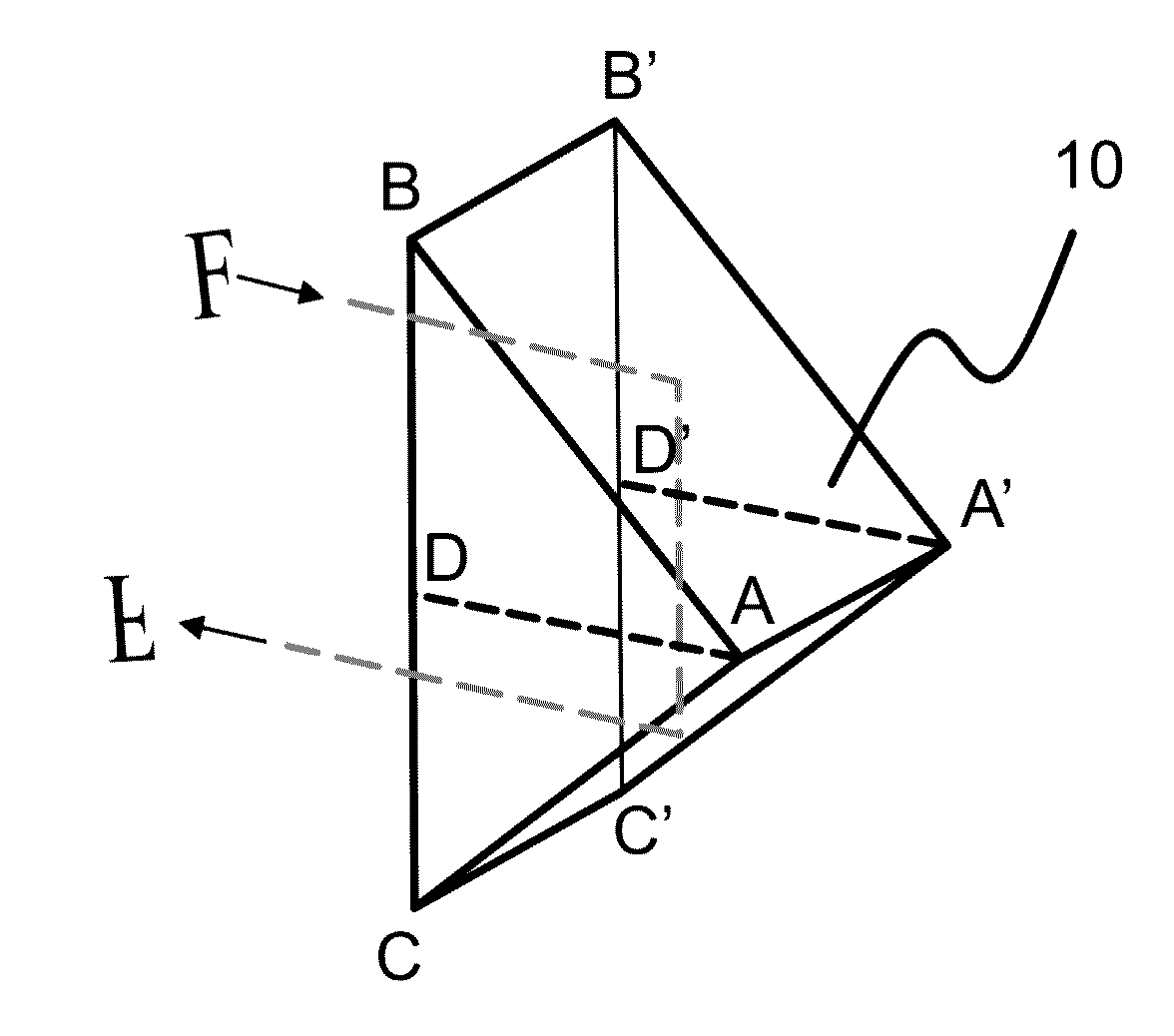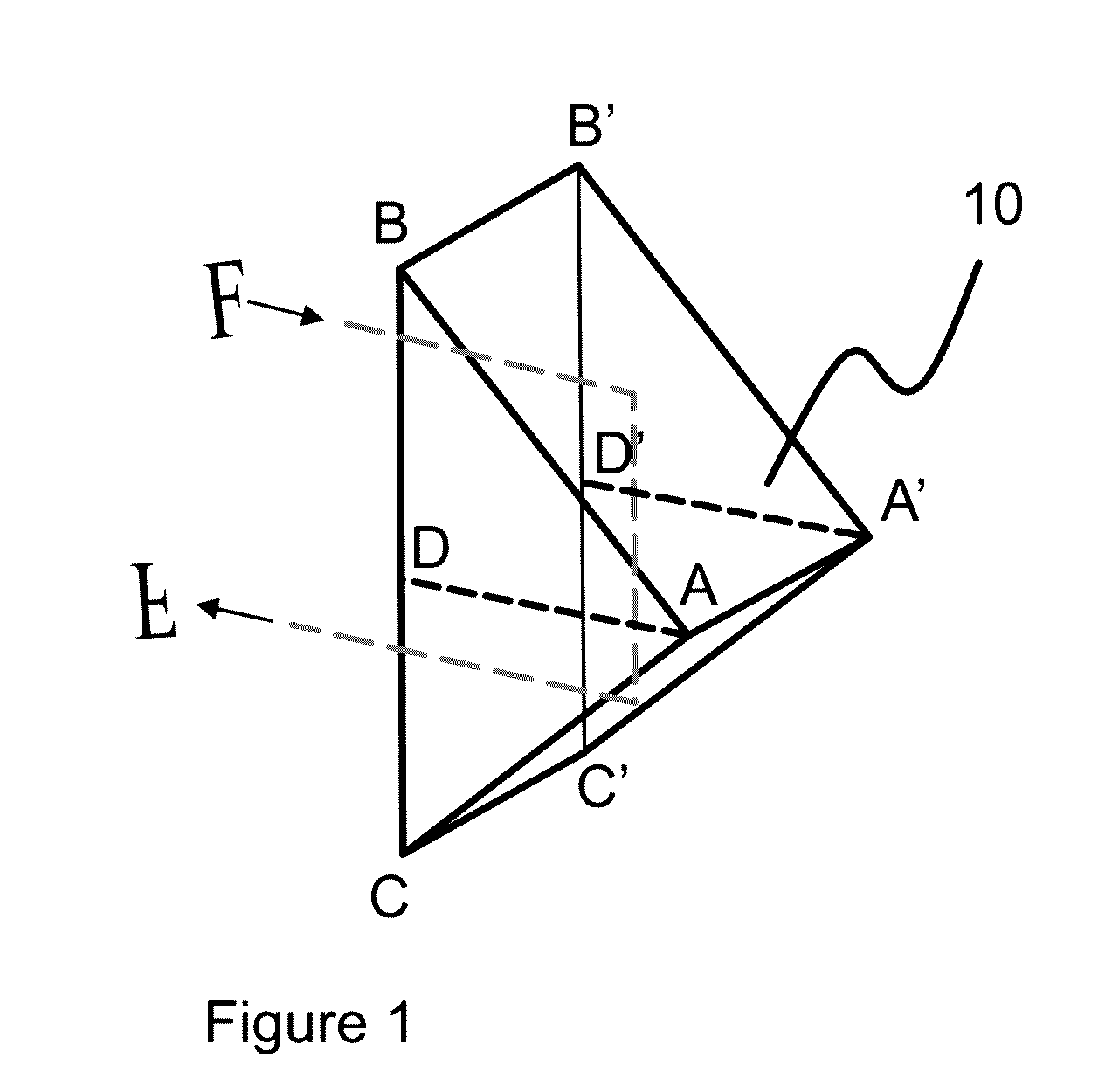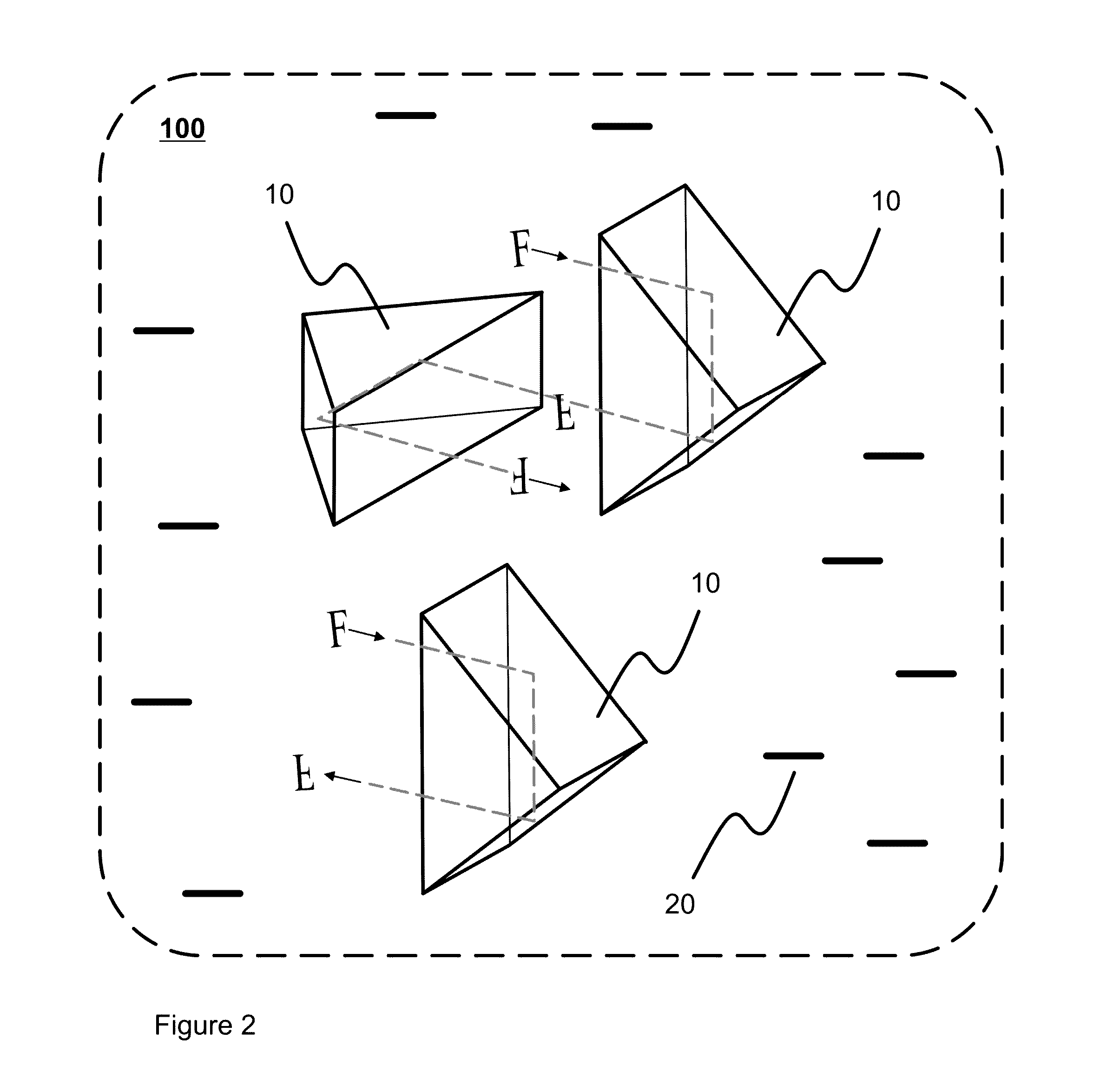Retroreflective biodegradable element, composite and related products
a biodegradable element and retroreflective technology, applied in the field of retroreflective gear, can solve the problems of limited applicability, difficult disposal and/or recycling, and limited application, and achieve the effect of exceptional versatility
- Summary
- Abstract
- Description
- Claims
- Application Information
AI Technical Summary
Benefits of technology
Problems solved by technology
Method used
Image
Examples
Embodiment Construction
[0035]Detailed embodiments of the present invention are disclosed herein with the reference to accompanying drawings. A retroreflective element 10 is provided in the form of a prism. A three-dimensional object fulfills the definition of a prism, whether it has two bases, constituting identical and / or congruent polygons and similarly oriented in parallel planes such, that the prism has a number of flat lateral (side) faces in the form of rectangles and the same cross-section all along its length. The number of lateral faces in a prism corresponds to the number of sides at each base thereof. FIG. 1 illustrates an exemplary element 10 in the form of a triangular prism. It is generally known that triangular prism is a three-dimensional object, whose bases constitute equal triangles, similarly oriented in parallel planes so the prism has flat side faces in the form of parallelograms and the same cross-section all along its length. Bases of such prism preferably constitute equilateral tri...
PUM
| Property | Measurement | Unit |
|---|---|---|
| distance | aaaaa | aaaaa |
| temperatures | aaaaa | aaaaa |
| reflectance | aaaaa | aaaaa |
Abstract
Description
Claims
Application Information
 Login to View More
Login to View More - Generate Ideas
- Intellectual Property
- Life Sciences
- Materials
- Tech Scout
- Unparalleled Data Quality
- Higher Quality Content
- 60% Fewer Hallucinations
Browse by: Latest US Patents, China's latest patents, Technical Efficacy Thesaurus, Application Domain, Technology Topic, Popular Technical Reports.
© 2025 PatSnap. All rights reserved.Legal|Privacy policy|Modern Slavery Act Transparency Statement|Sitemap|About US| Contact US: help@patsnap.com



